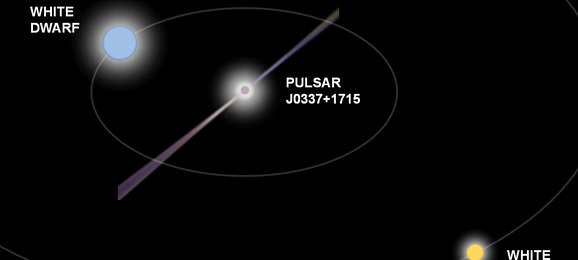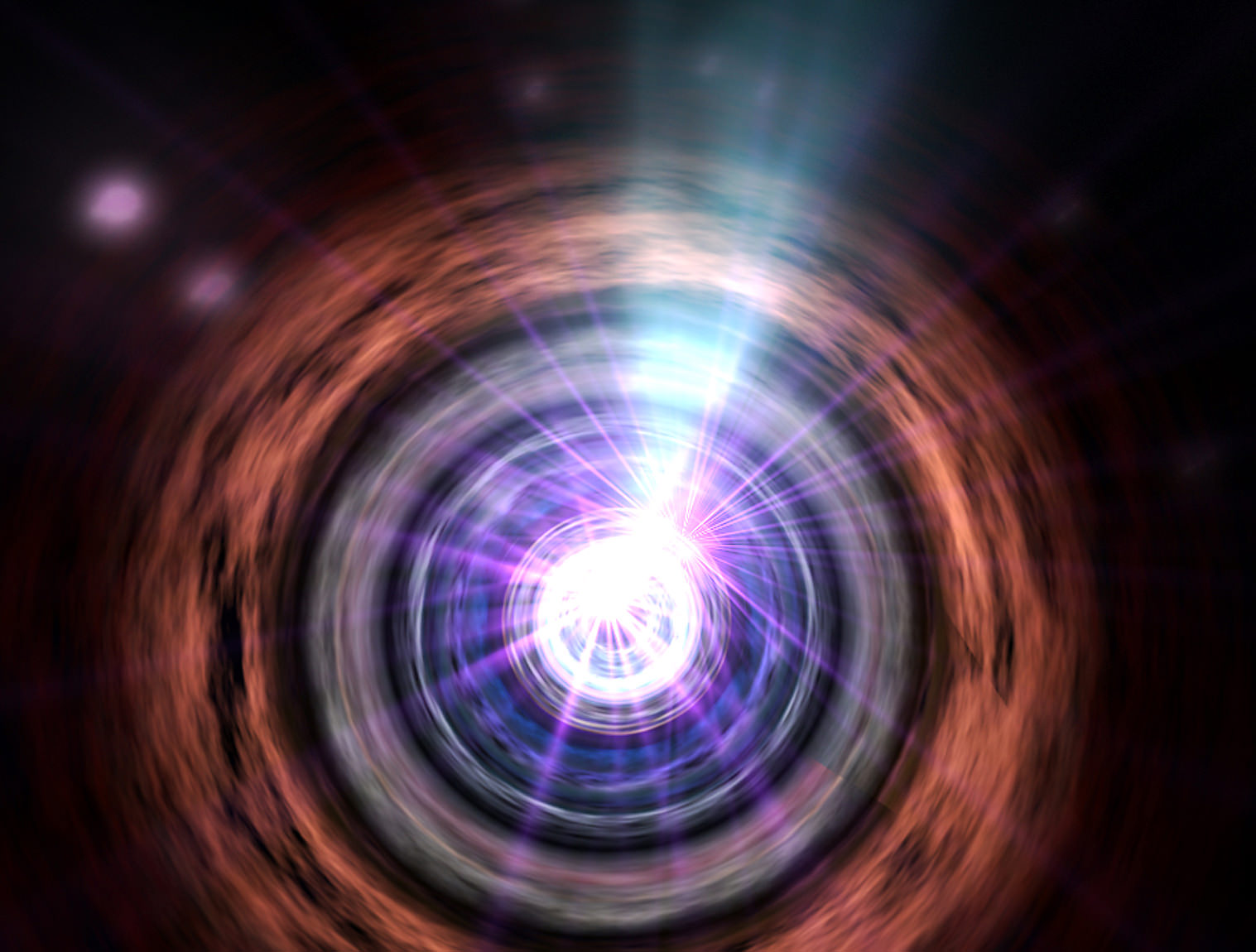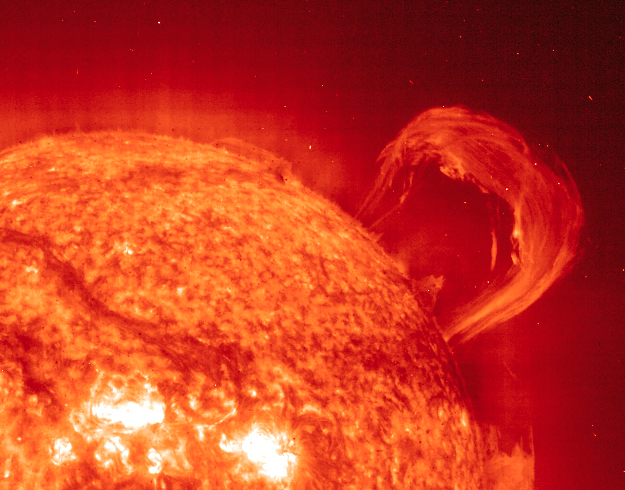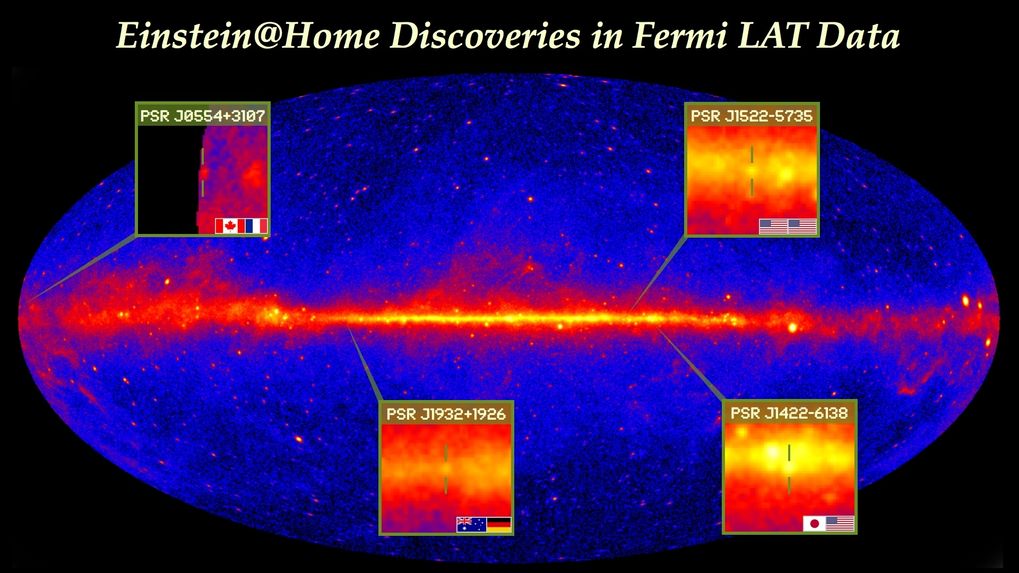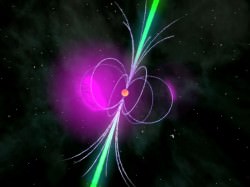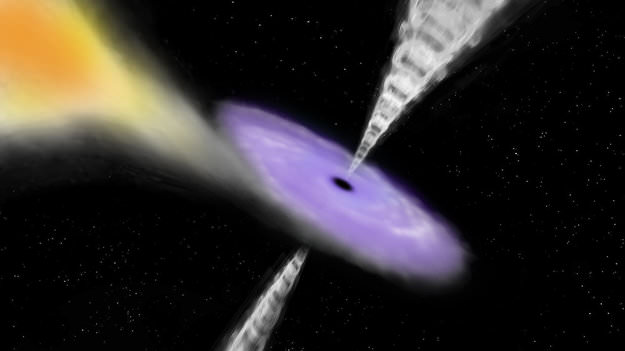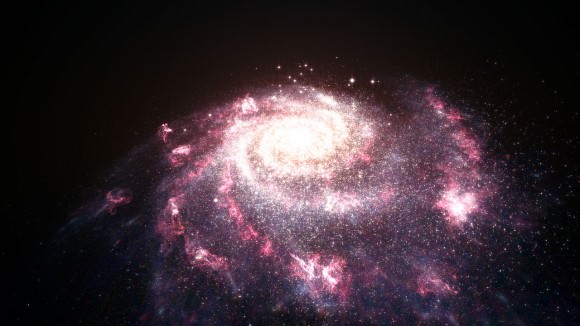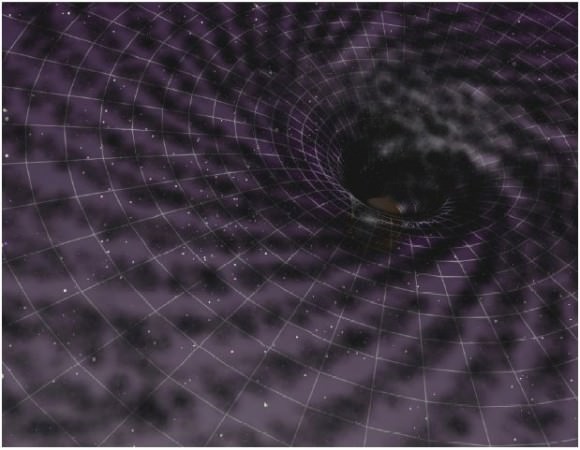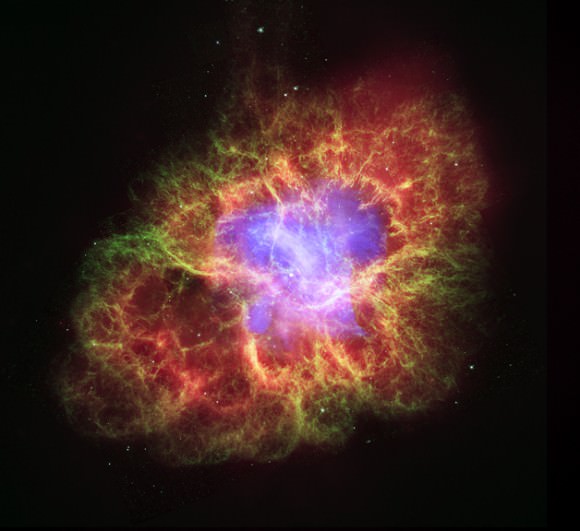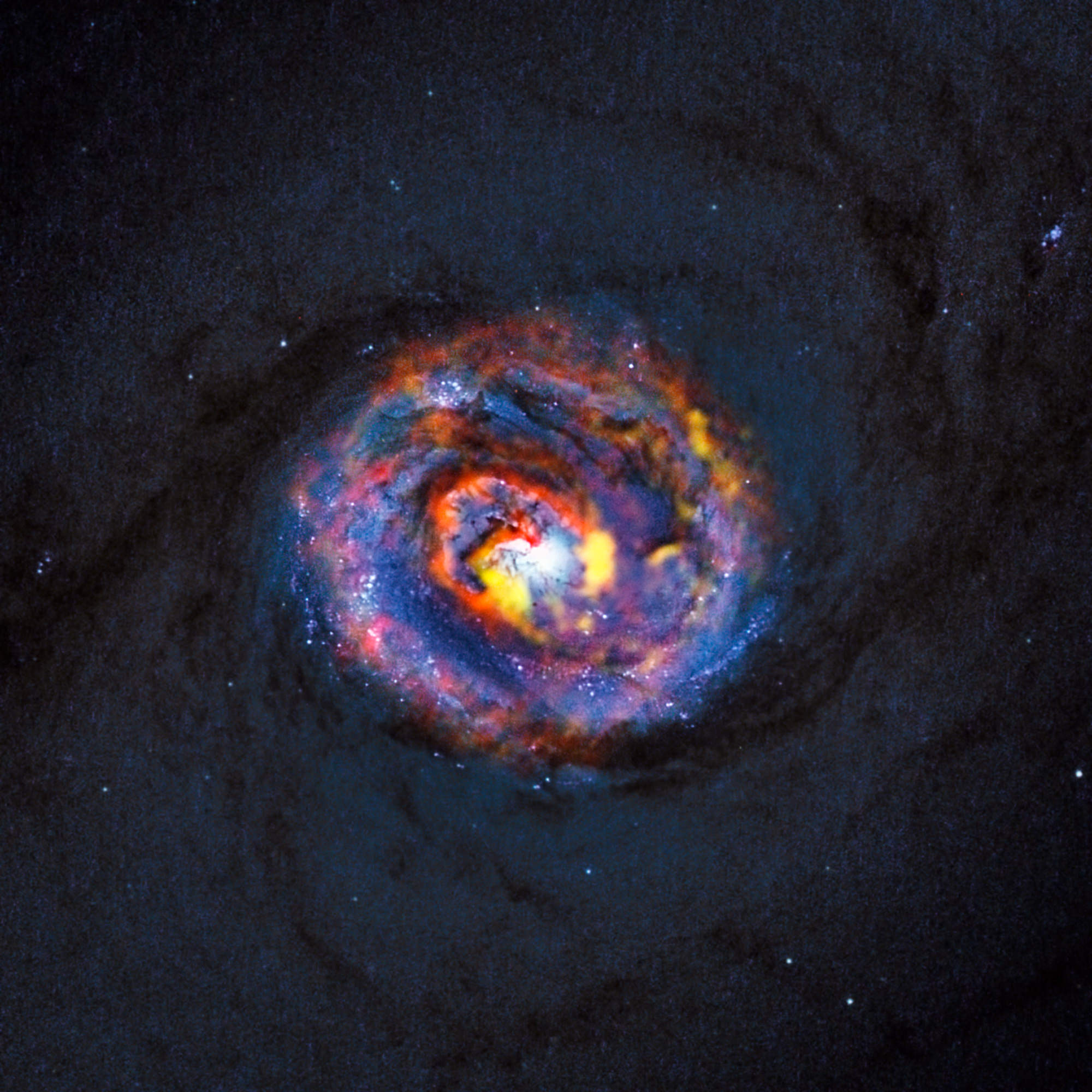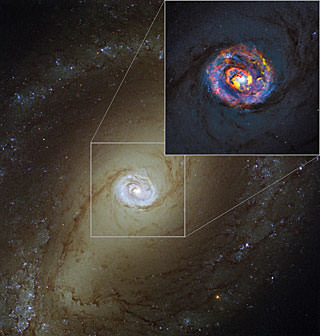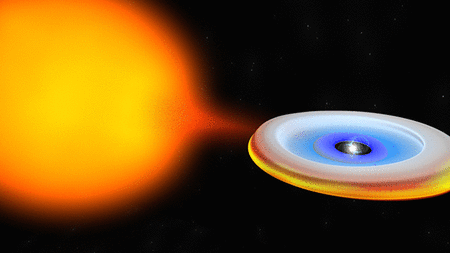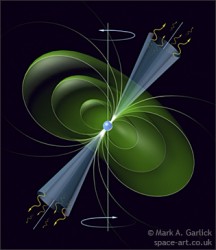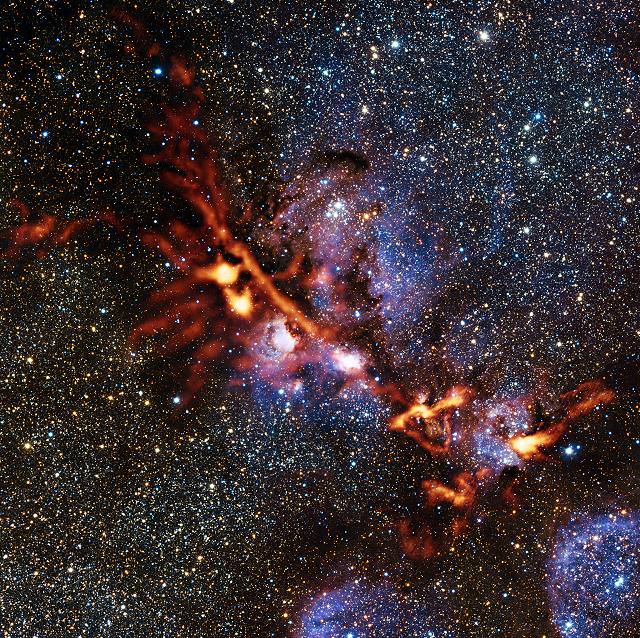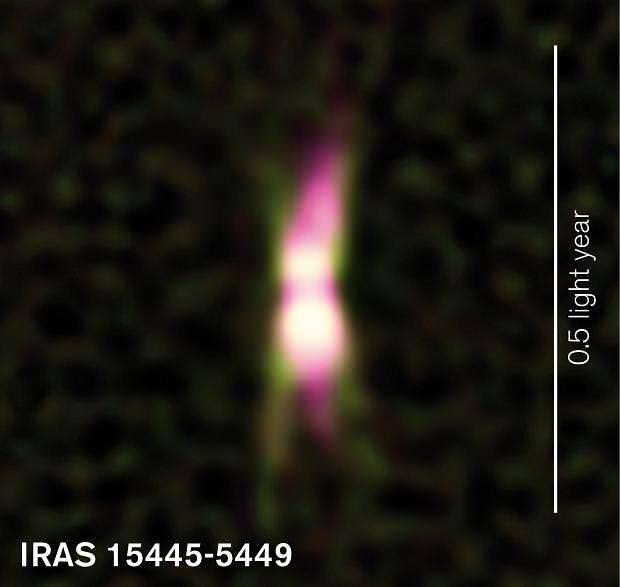If you’re looking for something truly unique, then check out the cosmic menage aux trois ferreted out by a team of international astronomers using the Green Bank Telescope (GBT). This unusual group located in the constellation of Taurus includes a pulsar which is orbited by a pair of white dwarf stars. It’s the first time researchers have identified a triple star system containing a pulsar and the team has already employed the clock-like precision of the pulsar’s beat to observe the effects of gravitational interactions.
“This is a truly remarkable system with three degenerate objects. It has survived three phases of mass transfer and a supernova explosion, and yet it remained dynamically stable”, says Thomas Tauris, first author of the present study. “Pulsars have previously been found with planets and in recent years a number of peculiar binary pulsars were discovered which seem to require a triple system origin. But this new millisecond pulsar is the first to be detected with two white dwarfs.”
This wasn’t just a chance discovery. The observations of 4,200 light year distant J0337+1715 came from an intensive study program involving several of the world’s largest radio telescopes including the GBT, the Arecibo radio telescope in Puerto Rico, and ASTRON’s Westerbork Synthesis Radio Telescope in the Netherlands. West Virginia University graduate student Jason Boyles was the first to detect the millisecond pulsar, spinning nearly 366 times per second, and captured in a system which isn’t any larger than Earth’s orbit around the Sun. This close knit association, coupled with the fact the trio of stars is far denser than the Sun create the perfect conditions to examine the true nature of gravity. Generations of scientists have waited for such an opportunity to study the ‘Strong Equivalence Principle’ postulated in Einstein’s theory of General Relativity. “This triple star system gives us the best-ever cosmic laboratory for learning how such three-body systems work, and potentially for detecting problems with General Relativity, which some physicists expect to see under such extreme conditions,” says first author Scott Ransom of the National Radio Astronomy Observatory (NRAO).
“It was a monumental observing campaign,” comments Jason Hessels, of ASTRON (the Netherlands Institute for Radio Astronomy) and the University of Amsterdam. “For a time we were observing this pulsar every single day, just so we could make sense of the complicated way in which it was moving around its two companion stars.” Hessels led the frequent monitoring of the system with the Westerbork Synthesis Radio Telescope.
Not only did the research team tackle a formidable amount of data, but they also took on the challenge of modeling the system. “Our observations of this system have made some of the most accurate measurements of masses in astrophysics,” says Anne Archibald, also from ASTRON. “Some of our measurements of the relative positions of the stars in the system are accurate to hundreds of meters, even though these stars are about 10,000 trillion kilometers from Earth” she adds.
Leading the study, Archibald created the system simulation which predicts its motions. Using the solid science methods once employed by Isaac Newton to study the Earth-Moon-Sun system, she then combined the data with the ‘new’ gravity of Albert Einstein, which was necessary to make sense of the information. “Moving forward, the system gives the scientists the best opportunity yet to discover a violation of a concept called the Strong Equivalence Principle. This principle is an important aspect of the theory of General Relativity, and states that the effect of gravity on a body does not depend on the nature or internal structure of that body.”
Need a refresher on the equivalence principle? Then if you don’t remember Galileo’s dropping two different weighted balls from the Leaning Tower of Pisa, then perhaps you’ll recall Apollo 15 Commander Dave Scott’s dropping of a hammer and a falcon feather while standing on the airless surface of the Moon in 1971. Thanks to mirrors left on the lunar surface, laser ranging measurements have been studied for years and provide the strongest constraints on the validity of the equivalence principle. Here the experimental masses are the stars themselves, and their different masses and gravitational binding energies will serve to check whether they all fall towards each other according to the Strong Equivalence Principle, or not. “Using the pulsar’s clock-like signal we’ve started testing this,” Archibald explains. “We believe that our tests will be much more sensitive than any previous attempts to find a deviation from the Strong Equivalence Principle.” “We’re extremely happy to have such a powerful laboratory for studying gravity,” Hessels adds. “Similar star systems must be extremely rare in our galaxy, and we’ve luckily found one of the few!”
Original Story Source: Astronomie Netherlands News Release. Further reading: Max-Planck-Institut für Radioastronomie (MPIfR) and NRAO Press Release.

